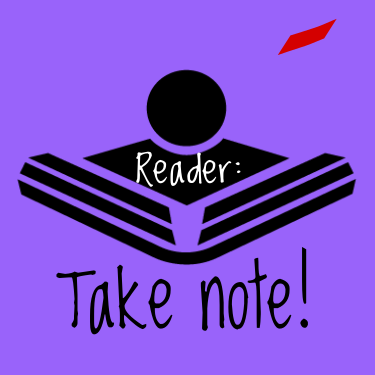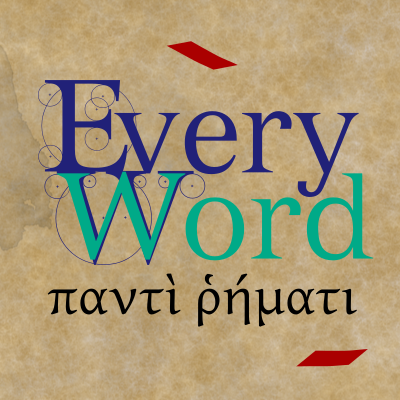Update from Phil and August 2021 Reader: Take Note
Description
I have been back from Indonesia for over a month now, and my life has slowly calmed down to the point where I can make a podcast again. If you listened to my last update, sent from my hotel room in Jakarta, and prayed for me, I want to say Thank You! The Lord answers prayers! If you would like to see a follow-up to my prayer requests from my last update, a link to our recent prayer letter is here in the episode notes. LINK
Heads up, people: I have some cool downloads for this episode. You can see all the links to those in the episode notes.
In my last update, I mentioned that I would share something about my article in Indonesian which started out with the title, The Heritage of the King James Version. After John Wycliffe, the first famous English Bible translator, I learned a bit more about William Tyndale. He fled for his life, and finally was betrayed and cruelly martyred in 1536. But his work greatly influenced Bible translations after him. One estimate says that 84% of the KJV shows influence from Tyndale. Beyond that, through subsequent translations, Tyndale’s influence is still felt. Bringing this home to the present day, if you read the ESV, Tyndale’s influence is discernible in that Bible. How amazing and I think this shows God’s fingerprints: The first Bible translator martyred is still influencing our Bible translations.
Before the KJV, there were two English translations of note: The first is the Great Bible, authorized by Henry the VIII. This was translated by Miles Coverdale. It was called ‘great’ because of its size. King Henry's Secretary of State, Thomas Cromwell, directed the clergy to provide “one book of the Bible of the largest volume in English, and the same set up in some convenient place within the said church that ye have care of, whereas your parishioners may most commodiously resort to the same and read it.” Note that this means that Cromwell and the king did not consider that parishioners might want their own copy! Coming only three years after Tyndale’s incomplete translation, Coverdale primarily revised and corrected Tyndale’s work. Coverdale translated the remaining books of the OT from the Latin Vulgate, not from the Hebrew.
The second precursor to the KJV that I want to mention is the Geneva Bible. It was published in 1560, 51 years before the KJV. Under the reign of Mary Queen of Scotts, when protestants were persecuted and more than 300 were martyred, many protestant theologians fled to various places in Europe. In particular, many fled to Geneva, where John Calvin was in the later years of his life. In 1557 they formed a committee to translate the Bible. Just a year later, Queen Elizabeth I gained the throne of England, and the dedication of the Geneva Bible was addressed to her.
The Geneva Bible scored an amazing number of FIRSTS:
- It was the first English Bible translation that was translated entirely from the original languages, Hebrew and Greek.
- It was the first Bible translated by a committee instead of by a lone individual.
- The Geneva Bible was the first to be printed in an easy to read Roman font.
- The Geneva Bible was the first study Bible, with Bible maps, and explanatory notes on every page. Note also that these notes were written by leading scholars of the Reformation.
- This was the first printed Bible with chapter and verse numbers.
- The Geneva Bible was the first one to use italic font for words that were added to complete English grammar, differentiating those words from all those that were direct translations of the source text.
- This Bible was printed in versions that were small enough to be easily carried and inexpensive enough that ordinary believers could own a copy.
The Geneva Bible (and not the KJV) is the Bible that was used by William Shakespeare, Oliver Cromwell, John Knox, John Donne, and John Bunyan (the writer of The Pilgrim’s Progress, 1678). This is the Bible that in 1620 was carried to America on the Mayflower. Twenty-four copies of this Bible are housed in libraries and museums in America. If you are interested in the Puritans and what the protestant reformers believed, get the Geneva Bible.
Facsimile copies of the Geneva Bible are available to buy, one of the 1560 edition, and the second of the 1591 edition. I have already given away my facsimile of the 1560 edition. However I have found a complete PDF that contains the complete 1560 edition, and the link for downloading it is here in the episode notes. (This PDF is only 259 MB because it is a black and white scan.) If you don’t want to learn to read the antique font in the PDF, Biblegateway displays the Geneva Bible complete with its footnotes.
However, when King James came to the throne of England, he did not like the Geneva Bible. One of the issues was those excellent study notes I mentioned above. You see, some of the notes contain critical remarks about what ‘kings or queens shouldn’t do’. (This is no wonder, seeing what the authors had been through!) James decreed that the new translation would not have any study notes.
It is an odd quirk of history, that the KJV has so dominated in its influence, because in its time it was
- not considered the most exact translation,
- not considered poetic in its style,
- not considered as the only authoritative Bible.
But it became the dominant Bible in England and eventually in the USA partly because its printing was authorized by the Crown, thereby suppressing the printing of the Geneva Bible. However, beyond doubt, the King James Bible has been, and still is, the world's most influential book. I will not take the time here to list its many influences over our English language and culture (as such praises can be found all over the Internet), but I highlight one influence not normally mentioned: The KJV has exerted a huge influence over Bible translations into the world’s languages.
Most of the time, Bible readers of this time do not realize that what is sold as a King James Version they use is not really the same as the original KJV. That is why a better name for the modern editions of the KJV is the Authorized Version. You can download a PDF of the whole KJV 1611 first edition here. (The whole Bible is 1.8 GB because this scan is in color.) [naked link: https://archive.org/details/1611TheAuthorizedKingJamesBible/page/n5/mode/2up]
One of the differences between the normal Authorized Version and the real 1611 KJV is that the Authorized Version won’t contain the Preface entitled The Translators to the Reader. If you think that you’re good at understanding King James English, I challenge you to read the original Preface. To make it easier to download, I have linked a copy of just the preface HERE. When you discover how difficult it is to read the original font and spelling, I have linked a PDF that contains the KJV Preface with modern spelling HERE. Unfortunately, what we need is a modern language translation of this important document, with footnotes explaining references to events, literary figures, or customs common to that era that leave modern readers in the dark.
Back in the 1980s, I wrote a letter to a special friend and supporter because he and his family had joined the King James Only movement. My short article with quotes from the Preface was later reprinted and used by Wycliffe Bible Translators. <a href="https://drive.google.com/file/d/1gQJuQ9Y0hruT2IwODS
























